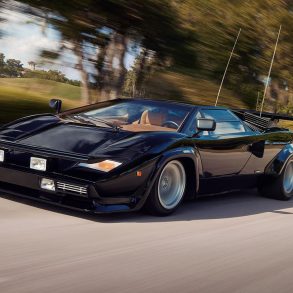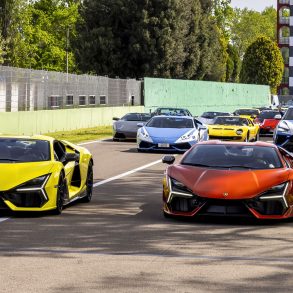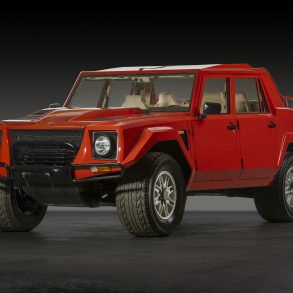31 years ago the Diablo super sports car was launched in the market. The car would go on to become one of the most iconic models in super sports car history. But its story started 5 years prior to this with a codename ‘Project 132’. Here is a concise timeline of the production of the Lamborghini Diablo.
In 1985 Automobili Lamborghini was working on Project 132, with the intention of succeeding the Countach at the top of the Lamborghini range.

Marcello Gandini styled clean and aggressive lines for the Diablo, however, they were somewhat altered by Chrysler’s design center, which at the time became a major stakeholder of Automobili Lamborghini.
When it was released it became officially the fastest production vehicle in the world, with a top speed of 203.1mph.

The car was equipped with the classic Lamborghini 12-cylinder set-up. This included a 5.7-liter engine, four overhead camshafts, and four valves per cylinder. The output of this engine was an incredible 485 HP with 580 NM of torque.
Although the car had a luxurious finish with a leather interior, electric windows, air conditioning, and electrically adjustable seats, the Diablo at its core is still a hard and pure car with traction on the rear wheels only. You will not find electronic driving aids or power steering as they were not available until 1993.

By 1993, the Diablo VT was launched by Automobili Lamborghini which was the first Lamborghini Granturismo to be a four-wheel drive.
It was also in 1993 that Automobili Lamborghini announced the SE30 series to commemorate the company’s 30th anniversary, a series that increased the power to 523 HP.

In 1995, the Diablo SV made its debut at the Geneva Motor Show, which was only available in a two-wheel-drive version with a maximum power output of 510 HP and an adjustable rear wing.
By the end of the same year, in December, the Diablo VT Roadster was introduced to the market. It was the first 12-cylinder, open-roofed, and mass-produced Lamborghini. The lines of the VT Roadster were slightly changed and was only offered with the four-wheel drive transmission.
Fast forward to 1999, after the Audi Group successfully purchased Automobili Lamborghini, the Diablo SV was unveiled. This was designed by Luc Donckerwolke, Lamborghini’s initial in-house designer.

Similar to the VT and the VT Roadster, the SV had revised lines and interior that clearly highlighted the modernization of the Diablo. The engine was also modernized as it now could produce 529 HP with the capability of 605 Nm of torque. It was also given a variable valve lift system and the brakes were completed by ABS, another first on a Lamborghini.
The Diablo is the most produced Lamborghini vehicle to date, having produced 2,903 units (Countach had 2,049 units produced). It was available until 2001 where it was succeeded by the Murciélago.

| Version | Year Produced | Units Produced |
|---|---|---|
| Diablo | 1990-1998 | 873 |
| VT | 1993-1998 | 529 |
| SE | 1993-1994 | 157 |
| SV | 1995-1999 | 346 |
| VT Roadster | 1995-1998 | 468 |
| SVR | 1996 | 34 |
| GTR | 1999-2000 | 32 |
| GT | 1999-2000 | 83 |
| 6.0 | 2000-2001 | 337 |
| 6.0 SE | 2001 | 44 |
[Source: Lamborghini]










